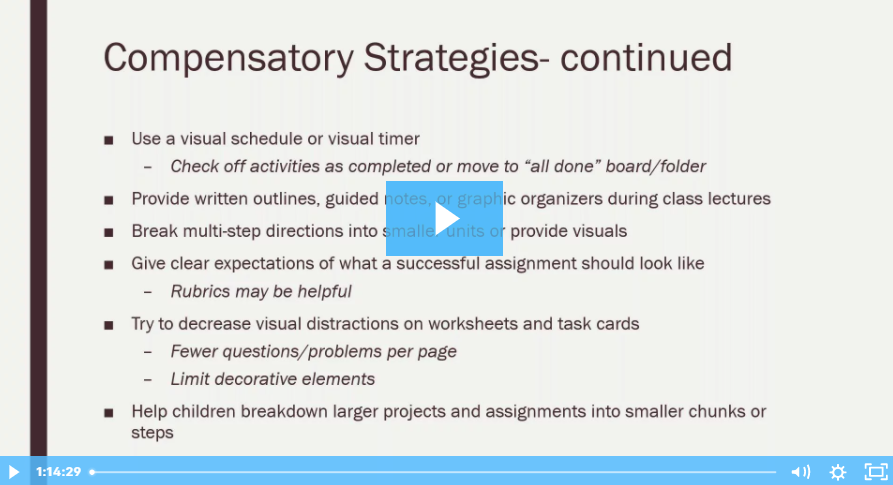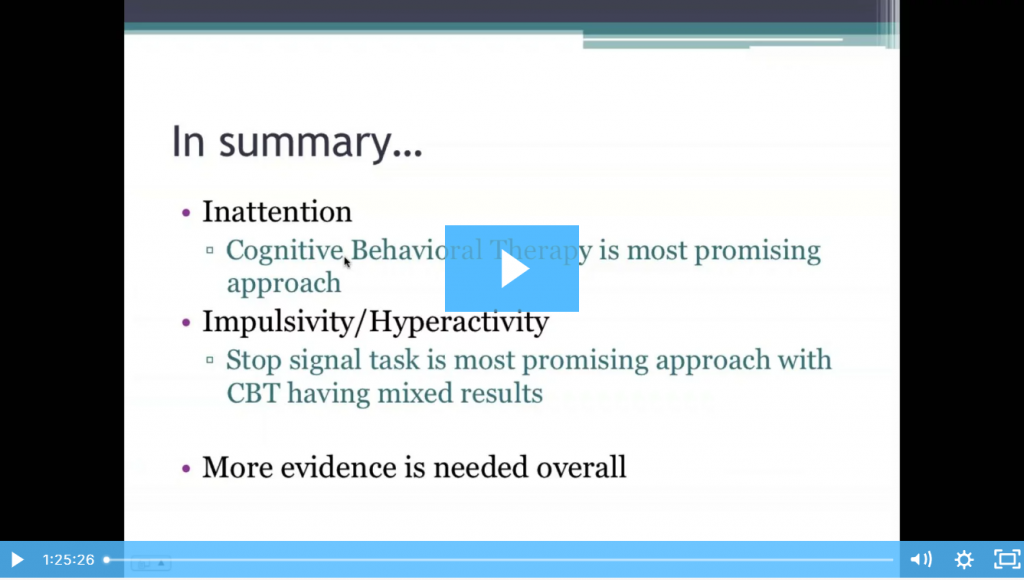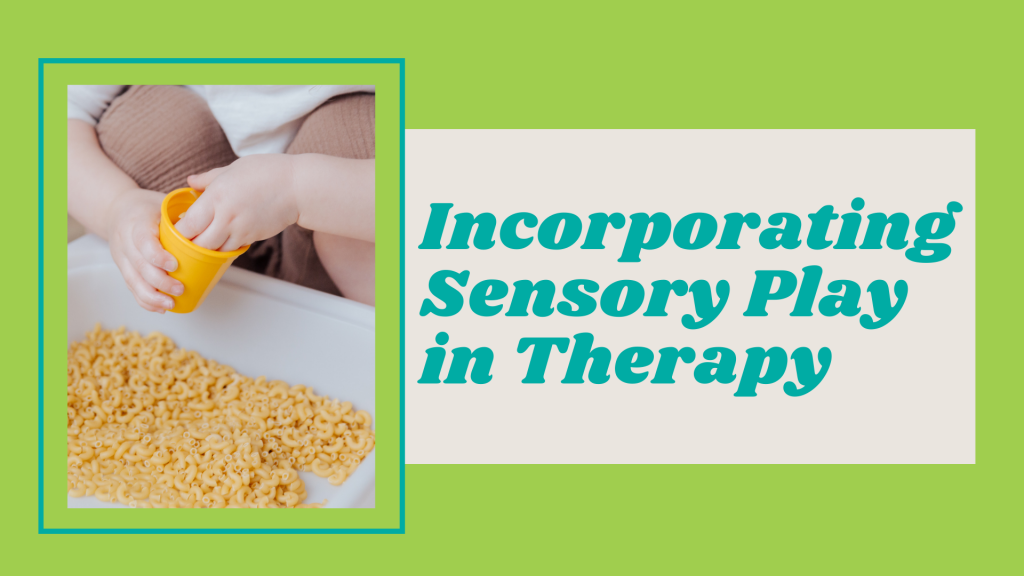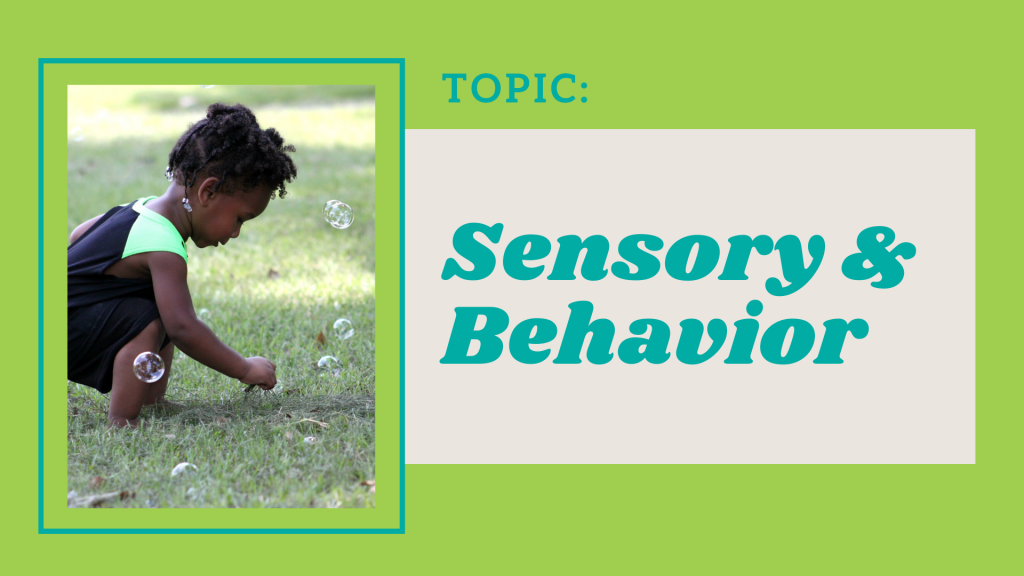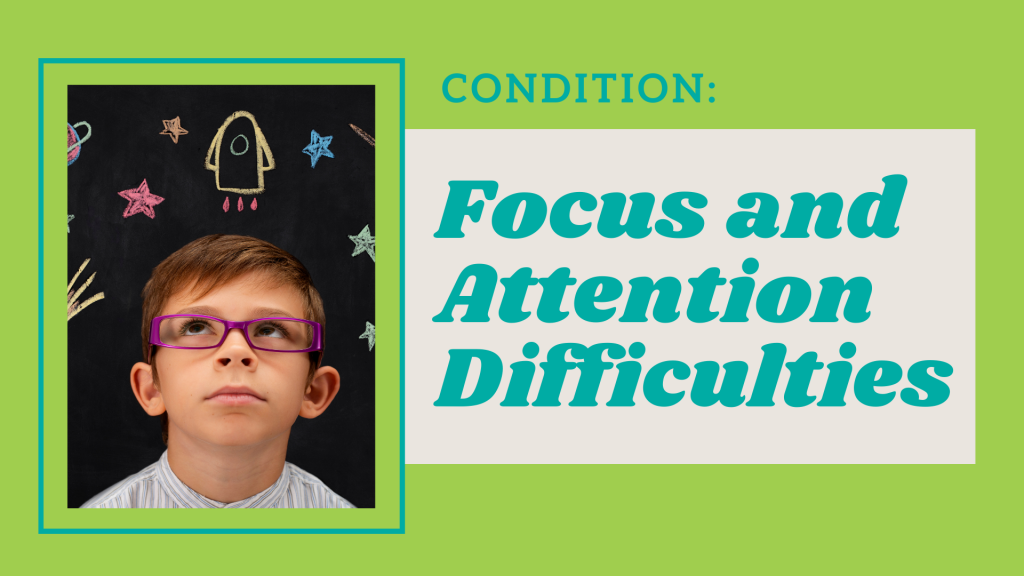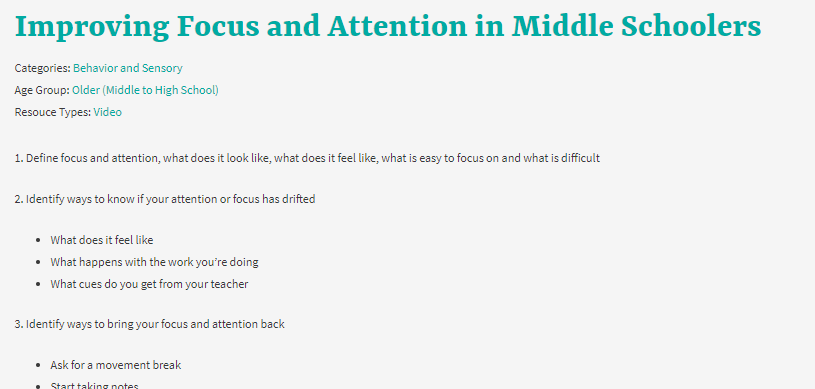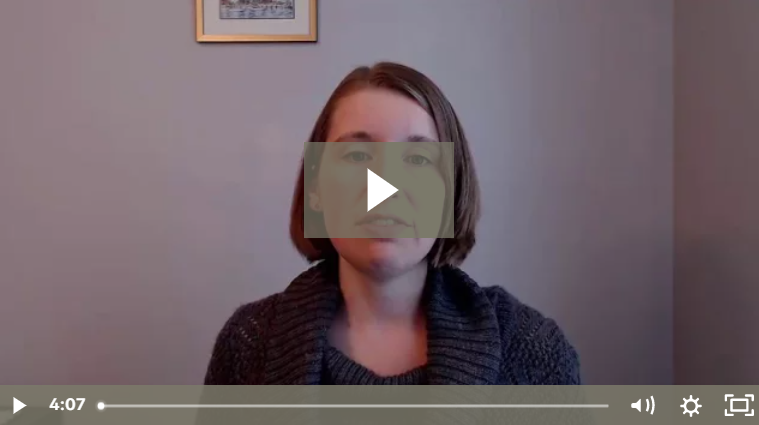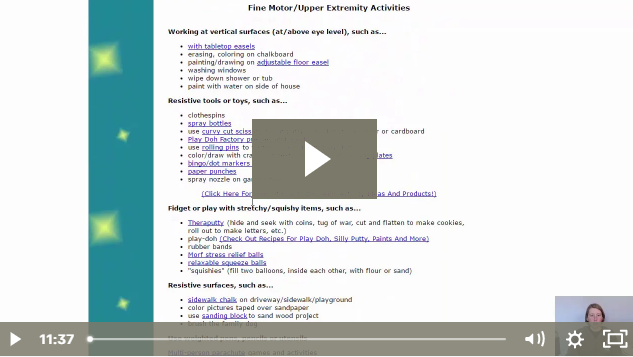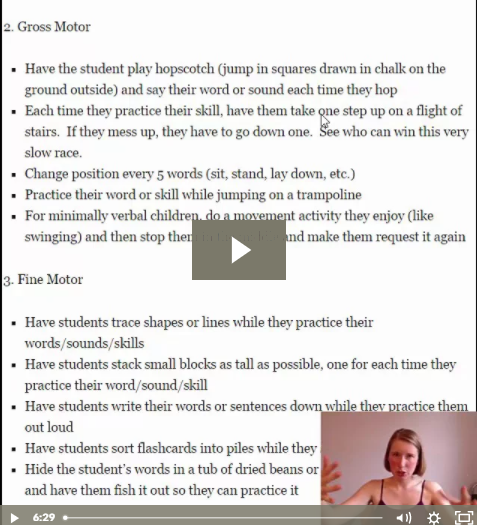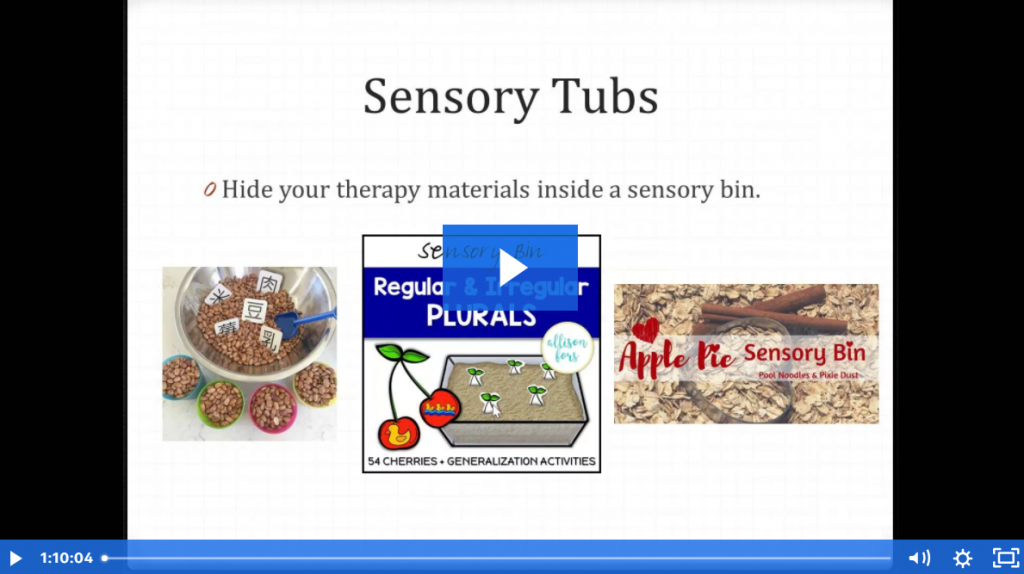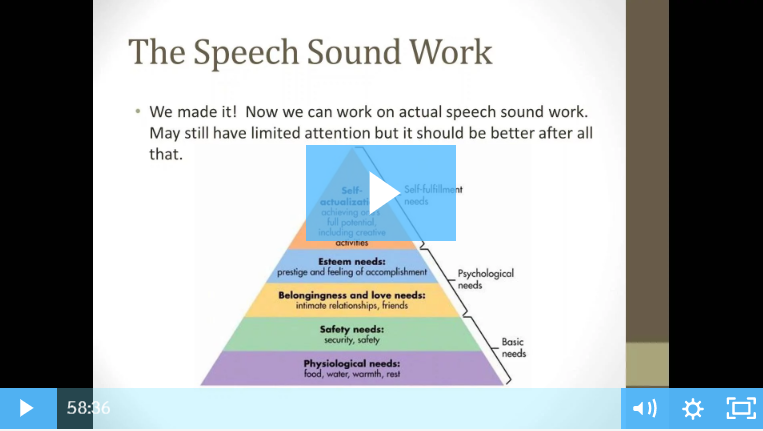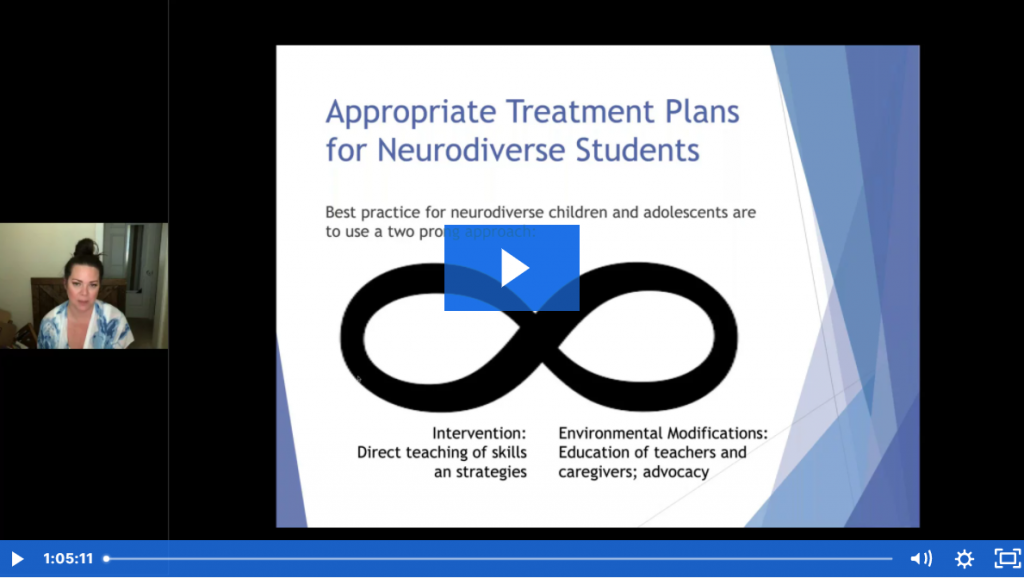Condition: Attention Deficit / Hyperactivity Disorder
Definition:
From the National Institute of Mental Health:
Attention-deficit/hyperactivity disorder (ADHD) is a disorder marked by an ongoing pattern of inattention and/or hyperactivity-impulsivity that interferes with functioning or development.
- Inattention means a person wanders off task, lacks persistence, has difficulty sustaining focus, and is disorganized; and these problems are not due to defiance or lack of comprehension.
- Hyperactivity means a person seems to move about constantly, including in situations in which it is not appropriate; or excessively fidgets, taps, or talks. In adults, it may be extreme restlessness or wearing others out with constant activity.
- Impulsivity means a person makes hasty actions that occur in the moment without first thinking about them and that may have a high potential for harm, or a desire for immediate rewards or inability to delay gratification. An impulsive person may be socially intrusive and excessively interrupt others or make important decisions without considering the long-term consequences.
Source: https://www.nimh.nih.gov/health/topics/attention-deficit-hyperactivity-disorder-adhd
Signs and Symptoms:
It’s important to keep in mind that there are three different types of ADHD or ADD:
- Predominantly Inattentive Presentation: if enough symptoms of inattention, but not hyperactivity-impulsivity, were present for the past six months
- Predominantly Hyperactive-Impulsive Presentation: if enough symptoms of hyperactivity-impulsivity, but not inattention, were present for the past six months.
- Combined Presentation: if enough symptoms of both criteria inattention and hyperactivity-impulsivity were present for the past 6 months
It is normal to have some inattention, unfocused motor activity, and impulsivity, but for people with ADHD, these behaviors:
- are more severe
- occur more often
- interfere with or reduce the quality of how they function socially, at school, or in a job
Inattention: People with symptoms of inattention may often:
- Overlook or miss details, make careless mistakes in schoolwork, at work, or during other activities
- Have problems sustaining attention in tasks or play, including conversations, lectures, or lengthy reading
- Not seem to listen when spoken to directly
- Not follow through on instructions and fail to finish schoolwork, chores, or duties in the workplace or start tasks but quickly lose focus and get easily sidetracked
- Have problems organizing tasks and activities, such as what to do in sequence, keeping materials and belongings in order, having messy work and poor time management, and failing to meet deadlines
- Avoid or dislike tasks that require sustained mental effort, such as schoolwork or homework, or for teens and older adults, preparing reports, completing forms, or reviewing lengthy papers
- Lose things necessary for tasks or activities, such as school supplies, pencils, books, tools, wallets, keys, paperwork, eyeglasses, and cell phones
- Be easily distracted by unrelated thoughts or stimuli
- Be forgetful in daily activities, such as chores, errands, returning calls, and keeping appointments
Hyperactivity-Impulsivity: People with symptoms of hyperactivity-impulsivity may often:
- Fidget and squirm in their seats
- Leave their seats in situations when staying seated is expected, such as in the classroom or the office
- Run or dash around or climb in situations where it is inappropriate or, in teens and adults, often feel restless
- Be unable to play or engage in hobbies quietly
- Be constantly in motion or “on the go,” or act as if “driven by a motor”
- Talk nonstop
- Blurt out an answer before a question has been completed, finish other people’s sentences, or speak without waiting for a turn in a conversation
- Have trouble waiting for his or her turn
- Interrupt or intrude on others, for example in conversations, games, or activities
Source: https://www.nimh.nih.gov/health/topics/attention-deficit-hyperactivity-disorder-adhd
Evaluation:
Diagnosis of ADHD requires a comprehensive evaluation by a licensed clinician, such as a pediatrician, psychologist, or psychiatrist with expertise in ADHD.
DSM-5 Criteria for ADHD
People with ADHD show a persistent pattern of inattention and/or hyperactivity–impulsivity that interferes with functioning or development:
- Inattention: Six or more symptoms of inattention for children up to age 16 years, or five or more for adolescents age 17 years and older and adults; symptoms of inattention have been present for at least 6 months, and they are inappropriate for developmental level:
- Often fails to give close attention to details or makes careless mistakes in schoolwork, at work, or with other activities.
- Often has trouble holding attention on tasks or play activities.
- Often does not seem to listen when spoken to directly.
- Often does not follow through on instructions and fails to finish schoolwork, chores, or duties in the workplace (e.g., loses focus, side-tracked).
- Often has trouble organizing tasks and activities.
- Often avoids, dislikes, or is reluctant to do tasks that require mental effort over a long period of time (such as schoolwork or homework).
- Often loses things necessary for tasks and activities (e.g. school materials, pencils, books, tools, wallets, keys, paperwork, eyeglasses, mobile telephones).
- Is often easily distracted
- Is often forgetful in daily activities.
- Hyperactivity and Impulsivity: Six or more symptoms of hyperactivity-impulsivity for children up to age 16 years, or five or more for adolescents age 17 years and older and adults; symptoms of hyperactivity-impulsivity have been present for at least 6 months to an extent that is disruptive and inappropriate for the person’s developmental level:
- Often fidgets with or taps hands or feet, or squirms in seat.
- Often leaves seat in situations when remaining seated is expected.
- Often runs about or climbs in situations where it is not appropriate (adolescents or adults may be limited to feeling restless).
- Often unable to play or take part in leisure activities quietly.
- Is often “on the go” acting as if “driven by a motor”.
- Often talks excessively.
- Often blurts out an answer before a question has been completed.
- Often has trouble waiting their turn.
- Often interrupts or intrudes on others (e.g., butts into conversations or games)
In addition, the following conditions must be met:
- Several inattentive or hyperactive-impulsive symptoms were present before age 12 years.
- Several symptoms are present in two or more settings, (such as at home, school or work; with friends or relatives; in other activities).
- There is clear evidence that the symptoms interfere with, or reduce the quality of, social, school, or work functioning.
- The symptoms are not better explained by another mental disorder (such as a mood disorder, anxiety disorder, dissociative disorder, or a personality disorder). The symptoms do not happen only during the course of schizophrenia or another psychotic disorder.
Based on the types of symptoms, three kinds (presentations) of ADHD can occur:
- Combined Presentation: if enough symptoms of both criteria inattention and hyperactivity-impulsivity were present for the past 6 months
- Predominantly Inattentive Presentation: if enough symptoms of inattention, but not hyperactivity-impulsivity, were present for the past six months
- Predominantly Hyperactive-Impulsive Presentation: if enough symptoms of hyperactivity-impulsivity, but not inattention, were present for the past six months.
Because symptoms can change over time, the presentation may change over time as well.
Suggested Goals:
Here are some goals that may need to be addressed in children with ADHD. You can click on one of the goals below to learn more. Or, scroll down to the therapy section for more in-depth resources and support for treating this condition.
- Establish Joint Attention
- Improve Attention and Focus
Therapy:
Here are some more resources and information that may help you when it comes to treating this condition.
Related Topics:
How to Incorporate Sensory Play in your Therapy Sessions
Sensory play is incredibly helpful for children who are struggling with attention and/or hyperactivity.
Additional resources for dealing with sensory and behavior issues as these often go along with ADHD diagnoses.
Condition: Focus and Attention Difficulties
Additional resources and information on treating general focus and attention problems.
Improving Focus and Attention in Middle-Schoolers
Quick tips for helping this population with attention problems
Training Videos:
These short videos will give you information about treating this condition.
Webinar Recordings:
These one-hour long webinar recordings will give you in-depth information about this topic.
How to Use Sensory and Movement Activities to Improve Participation in Therapy – Webinar Recording
Children with ADHD are better able to regulate their emotions, behavior, and attention when appropriate sensory and movement strategies are implemented
Speech Sound Therapy for Children with Attention Difficulties – Webinar Recording
Overview of how to help a child with speech sound problems when they are having trouble with attention during therapy
Didn’t Find What You’re Looking For?
We’re constantly working on adding new features and topics to this membership site. If you don’t find what you’re looking for by using the search bar at the top of the page, please use the button below to request new features or topics to be added!

